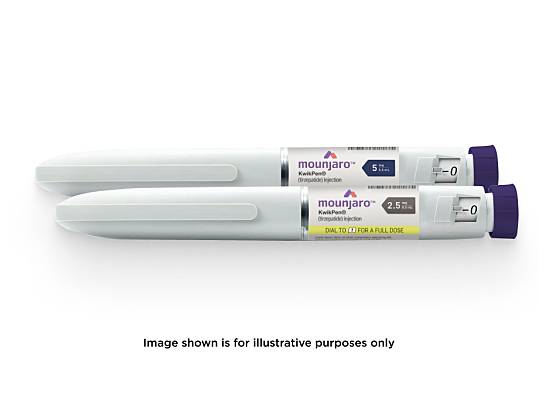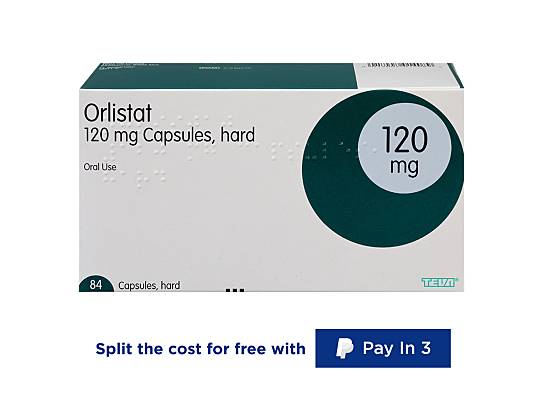Why am I not losing weight on Saxenda?

Medically reviewed by
Dr Kathryn BasfordLast reviewed: 26 Apr 2022
Saxenda is a medicine you can take to help you lose weight. It can be frustrating if you feel that you are not losing weight whilst taking Saxenda. There could be several reasons why you are not losing weight.
Losing weight can be difficult and takes time. It requires healthy lifestyle choices that need to be maintained over a long time. This includes eating a healthy diet and getting enough exercise.
One way to check if you are a healthy weight is by finding out your BMI (body mass index). You can check your BMI using the NHS BMI calculator. If your BMI is higher than recommended for your height, you may be at higher risk of developing conditions that can affect your overall health, like diabetes or heart disease. If you lose weight, you can reduce these risks.
You can use Saxenda if you are over 18 and if your BMI is either:
- over 30
- between 27 and 30 and you have a health condition related to weight such as pre-diabetes or type 2 diabetes, high blood pressure, abnormal levels of fat in the blood or obstructive sleep apnoea (breathing problems during sleep)
You can take Saxenda in addition to adapting or maintaining healthy lifestyle choices. Saxenda helps you lose weight by making you feel less hungry, encouraging you to eat less.
Does Saxenda work immediately?
Saxenda works immediately to suppress your appetite, but it will take a bit longer for Saxenda to have an effect on your weight.
It takes some time to work up to the full dose of Saxenda. You start taking Saxenda at a low dose of 0.6mg, once a day. The goal is to gradually increase the dose by 0.6mg a week over the first 5 weeks. Your doctor will be able to advise you how to increase your dose. From week 5, you will be taking the full dose of 3mg per day.
Increasing the dose gradually helps your body get used to Saxenda. It is also a helpful way of reducing the chance of side effects. Most side effects of Saxenda are mild and not everyone gets them. Some side effects are common when people first start taking Saxenda, for example:
- nausea
- vomiting
- diarrhoea
- constipation
- headache
These common side effects usually stop after a few days or weeks. Starting with a low dose of Saxenda can help reduce these side effects. It also means it will take a few weeks for Saxenda to reach its maximum effect on your appetite.
How long does Saxenda take to work?
How long it takes Saxenda to work varies between people. After 56 weeks of taking Saxenda at the full 3mg per day dose, 50.7% of people will have lost at least 5% of their starting body weight.
It can be helpful to think about how Saxenda works. Saxenda works by affecting your appetite. The active ingredient of Saxenda is liraglutide. Liraglutide is a substance similar to a hormone called GLP-1 (glucagon-like peptide-1). GLP-1 hormone helps you to feel less hungry and more full after eating. Saxenda mimics the effect of GLP-1. As your appetite is suppressed, you will feel more full which can help you eat less overall. You might find that you are able to eat smaller portions at meal times, or perhaps snack less.
By eating less, you will start to lose weight. It takes time for changes to the amount you eat to affect your weight.
It’s also better to lose weight gradually, because your body needs time to adjust. If you lose weight very quickly, you are more likely to put it on again. Reaching and maintaining a healthy weight is about making changes for the long term.
Although losing weight can feel like hard work at first, you may find it helpful to think about the reasons you are trying to lose weight. Consider setting yourself small goals. For example reducing the number of snacks you eat or eating smaller portions. It can also be helpful to have the support of family and friends.

No results found.
Please check your spelling or try another treatment name.
How do you know if Saxenda is working?
You’ll know if Saxenda is working by monitoring your weight and measuring the size of your waist or other body parts.
You may find it helpful to record your weight at regular intervals. Try and record your weight every week and at around the same time of day.
Another useful way to check if Saxenda is working is by measuring around your waist and your thigh with a tape measure.
Keep a record of your weight, waist and thigh measurements and it will help you see if you are losing weight and if Saxenda is working.
After a few days of taking Saxenda, you may notice that you feel less hungry between meals and more full at meal times. As you will feel more full, this will help you reduce the amount of calories you consume overall. Over time, your body will start to gradually use up its energy stores, such as fat, and help you lose weight.
If you have not lost 5% of your starting body weight after 12 weeks of taking Saxenda at the 3mg dose, you will need to stop taking it. A different weight loss treatment may be suitable for you, and a doctor or Asda Online Doctor can help.
Reasons why Saxenda may not be working
There may be several reasons why you feel that Saxenda is not working.
It takes time for Saxenda to work. If you have only been taking Saxenda for a short period of time, it may be too soon for it to have an effect. You will need to take Saxenda for 5 weeks to reach the full daily dose.
Most people will have lost weight after a further 12 weeks. Although your appetite will be suppressed immediately, it will take time for this to have an effect on your weight overall.
As you feel more full and less hungry whilst taking Saxenda, you will be able to reduce the amount of food you eat. Over time, reducing the amount you eat can lead to weight loss.
Make sure you are taking Saxenda correctly and at the right dose. You can watch a video to help make sure you are using the Saxenda pen correctly.
Saxenda has been shown in clinical trials to be effective in helping most people to lose weight. This doesn’t mean that it works for everyone. In a large scale trial of more than 3,000 people, most people taking Saxenda lost weight. All the people taking part in the trial were also given advice about having a healthy diet and exercising.
After taking Saxenda at the maintenance dose for 56 weeks, 50.7% of people had lost at least 5% of their body weight. In comparison, just 21.3% of people taking a placebo (a dummy drug with no pharmacological effect) had lost at least 5% of their body weight.
Saxenda works if you use it in addition to making healthy lifestyle choices. That means eating a healthy diet and exercising. Taking Saxenda on its own without making any other changes to your lifestyle won’t be enough to make you lose weight.
If you have type 2 diabetes, you should speak to your doctor for advice about using Saxenda. You may need to adjust the amount of insulin you use to reduce the risk of low blood sugar (hypoglycaemia).
Consuming too many calories
If you consume too many calories each day, you may find that you are not losing weight even if you are taking Saxenda. You should take Saxenda as part of a weight loss plan.
There are lots of resources available to help you eat and manage a healthy, calorie controlled diet. You may find it helpful to think ahead and make a meal plan. In general, women are recommended to consume no more than 2,000 calories a day and men no more than 2,500. If you are consuming more than this, you will need to reduce your daily calorie intake and switch to a lower calorie diet in order to lose weight. You can speak to your doctor or a healthcare professional for advice about weight loss. There is also a free weight loss app available from the NHS.
For weight management and in order to avoid weight gain, it's important to eat a healthy diet over the long term. This means keeping your daily calorie intake no higher than the recommended amount. Once you have lost weight, you will need to continue eating healthily to keep the weight off. If you lost weight when you first took Saxenda but have now stopped losing weight, or even gained weight, it may be worth having another look at your eating patterns.
Not enough physical activity
If you do not do enough physical activity each day, you may not lose as much weight as you would like to on Saxenda. Increasing the amount of exercise you do can help you to lose weight. Exercise is also important to keep your body healthy.
You will be more likely to lose weight if you are getting the recommended amount of exercise as well as taking Saxenda.
Adults between the ages of 19 to 64 years old are recommended to do some sort of physical activity every day. You should aim to do at least 150 minutes of moderate activity or 75 minutes of vigorous activity every week. Adults are also recommended to do strengthening activities, like lifting weights, twice a week.
If you are new to exercise, it can take time to build up to this level of exercise. You may find it challenging to find time to exercise. Try and think about how you can fit exercise into your daily or weekly routine. You may find it helpful to make a plan and to set realistic targets.
There are lots of places you can go to for advice. You can speak to your doctor or healthcare professional, or try the NHS couch to 5k programme.

Dr Kathryn Basford is a qualified GP who works as a GP in London, as well as with ZAVA. She graduated from the University of Manchester and completed her GP training through Whipps Cross Hospital in London.
Meet our doctorsArticle created: 26 Apr 2022
Last reviewed: 26 Apr 2022
-
A Randomized, Controlled Trial of 3.0 mg of Liraglutide in Weight Management N Engl J Med (2015)
-
Saxenda 6mg/ml Patient Information Leaflet (PIL) [Dec 2021] [accessed Mar 2022]
-
Obesity (NHS) [May 2019] [accessed Mar 2022]




(Reviews are for ZAVA UK)


GMC: 7074021

GMC: 6149061

GMC: 7085115











